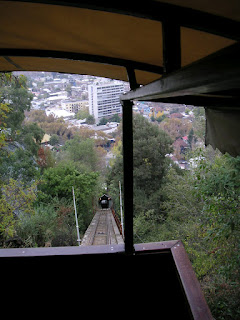The mystics were
Saint Teresa and
Saint John of the Cross; the other was
Torquemada, the first Grand Inquisitor of the
Spanish Inquisition, and the town is
Ávila. St. Teresa and St. John were both born in Ávila and Torquemada, famously played by
Mel Brooks in
History of the World, Part I and by
Monty Python in one of their sketches, died there. There is an even weirder relationship between St. Teresa and Torquemada. The grandfather of St. Teresa was a converted Jew who was accused by the Spanish Inquisition of re-embracing his faith and was condemned to walk in procession, together with other condemned, wearing what was known as a
sambenito.
The historical centre of Ávila is small and pleasant. The town is best known for being the birthplace of St. Teresa and for its
medieval Walls that span 2.5 Kms. encircling the town.
A good option to stay in Ávila is the
Parador, set in a restored 16th Century Palace, adjacent to the Wall and with a very pleasant garden and where you can also savour the local food, famously, the
Chuletón de Ávila if you like meat and the sweet
Yemas de Santa Teresa.
















